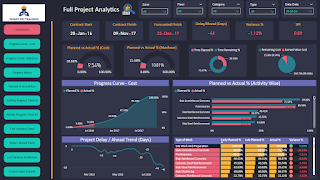Mastering Dispute Resolution: Tips For Presenting Delay Analysis Findings
Delays are nearly always a given in building projects. Learning delay analysis in construction and presenting its findings clearly become critical for resolving conflicts related to the project schedules. Gaining proficiency in the presentation of delay analysis results can have a big influence on the results for engineers, project managers, and participants in the project. Let us look at some essential tips for negotiating this important facet of conflict resolution.
Knowing Your Audience
Understand your audience before you start presenting the results of
your delay analysis. Your presentation will work better if you adjust it
to stakeholders' priorities and degree of knowledge. Communicate
clearly all along the way by using language that appeals to your
audience.
Essential Clarity
Presenting
delay analysis results requires clarity above all else. Steer clear of
too much technicality and complex justifications that might overwhelm or
confuse your readers. Rather, you should aim your presentation for
consistency and simplicity. Divide complex ideas into manageable pieces
backed up with illustrations or actual cases to help with comprehension.
Using Visual Aids
In conflict resolution processes, a picture is worth a thousand words.
Timelines, charts, and graphical depictions of delay effects are some
visual aids that may greatly improve the impact and clarity of your
presentation. Complex data is simplified by graphics, which also offer
an audience-resonant visual story.
Narrate a Great Story
More than just giving statistics, good presentations weave a gripping
narrative. Put your presentation together in a narrative style that
emphasizes the series of circumstances that caused the delays, how they
affected the project, and what happened as a result. A well-crafted
narrative that draws in your audience and emphasizes the importance of
your results will help you to engage them.
Give Background Information
Knowing the consequences of delay analysis results requires placing
them in the larger project context. To give a thorough picture of the
delay backdrop, describe the goals, contractual responsibilities, and
pertinent milestones of the project. By giving background, you help your
audience see the connections between important links in construction claims and delay analysis.
For a solid case to be made in conflict resolution procedures, you must
also anticipate disagreements and prepare your points accordingly.
About Smart PM Training:
Smart PM Training provides complete courses designed for engineers in
the building sector. The platform offers fundamental project planning
courses and construction delay analysis courses.
Its training gives professionals the real-world abilities they need to
manage project delays and dispute settlements successfully.
For more information on project planning and management courses, visit https://smartpmtraining.com/




Comments
Post a Comment